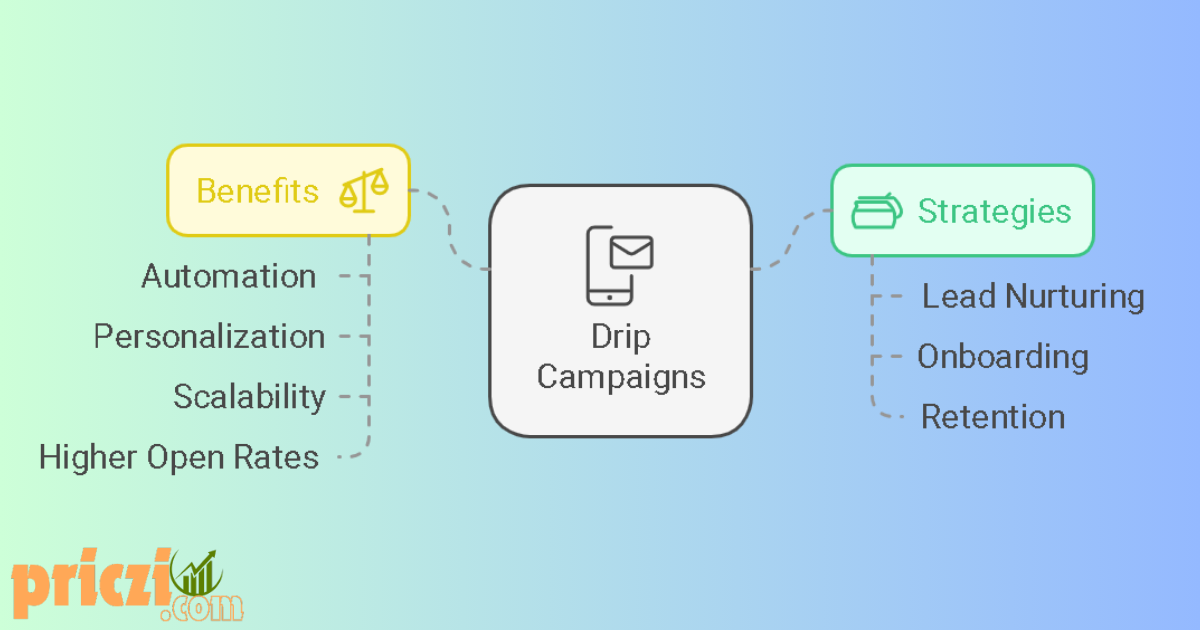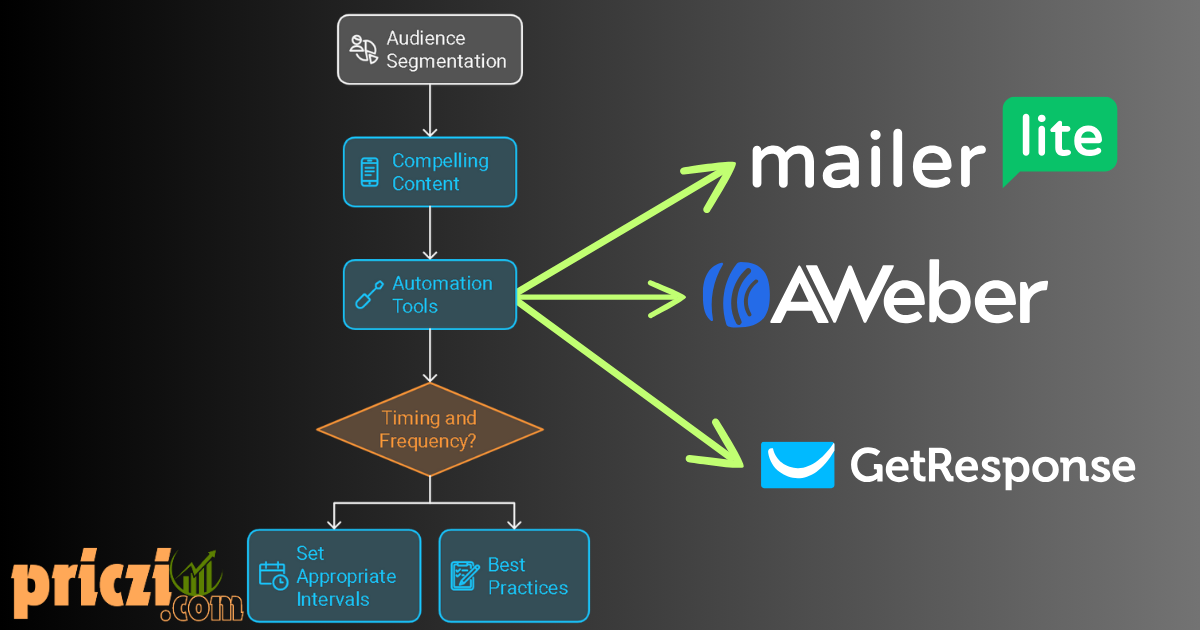What Are Drip Campaigns?
Drip campaigns, also known as automated marketing campaigns, are a series of pre-written messages delivered over time to engage and nurture prospects or customers.
Leveraging email, SMS, or other digital channels, these campaigns aim to guide recipients through the customer journey.
They’re designed to deliver the right message at the right time, providing businesses with a powerful tool to automate communication and build meaningful relationships.

In this guide, you’ll discover the fundamentals of drip campaigns, their benefits, and how to create and optimize them for your business.
The Basics of Drip Campaigns
Understanding Drip Campaigns
Drip campaigns function by using triggers—specific actions or behaviors—to initiate a sequence of messages. For example, a welcome email might be sent when someone subscribes to your newsletter. Common strategies include:
- Lead nurturing: Gradually converting leads into customers.
- Onboarding: Helping new users understand your product or service.
- Retention: Keeping existing customers engaged.
Why Drip Campaigns Matter
Drip campaigns offer several key advantages:
- Automation: Save time with pre-scheduled messages.
- Personalization: Tailor content based on user behavior.
- Scalability: Reach a large audience without sacrificing quality.
For example, research by EmailMonday shows that automated campaigns result in 70.5% higher open rates compared to one-off messages.
The statistic indicating that automated email campaigns achieve a 70.5% higher open rate compared to one-off messages is widely cited across multiple reputable sources. For instance, Campaign Monitor references this figure, attributing it to the Epsilon Email Institute.
Similarly, Woopra’s blog on marketing automation statistics also mentions this data point, again citing Epsilon’s research.
While the original Epsilon report may not be directly accessible, its findings are consistently referenced in discussions about the effectiveness of automated email campaigns.

Key Elements of a Successful Drip Campaign
Components of an Effective Drip Campaign
- Audience Segmentation: Group your audience based on factors like demographics or purchase history. Tailored messages are far more effective.
- Compelling Content: Create messages that resonate with your audience. Use engaging subject lines and clear calls to action (CTAs).
- Automation Tools: Platforms like getresponse and MailerLite make it easy to manage and track campaigns.
Timing and Frequency in Drip Campaigns
- Set appropriate intervals: Avoid overwhelming recipients by spacing messages strategically.
- Best practices: Start with weekly emails, then adjust based on engagement metrics.

Types of Drip Campaigns
Exploring Different Drip Campaign Strategies
Drip campaigns offer flexibility and can be tailored to different business goals. Here are some popular types:
- Welcome Campaigns: These campaigns are designed to make a strong first impression by sending personalized greetings and introductory offers immediately after a user subscribes. They help set the tone for your future interactions.
- Lead Nurturing Campaigns: Focused on prospects, these campaigns provide valuable insights and content to guide leads through the sales funnel, gradually moving them closer to making a purchase.
- Re-engagement Campaigns: Specifically aimed at winning back inactive users, these campaigns often include special offers, surveys, or other incentives to re-capture the audience’s attention.
- Educational Campaigns: Perfect for onboarding or training, these campaigns deliver how-to guides, product tutorials, and tips that enhance the user experience and encourage long-term engagement.
Setting Up a Drip Campaign: A Step-by-Step Guide
How to Build a Drip Campaign from Scratch
- Choose a Platform: Use tools like getresponse or Aweber or mailerlite to design and automate your workflows.
- Design Workflows and Triggers: Define the actions that initiate your campaign, such as a website visit or form submission.
- Test and Optimize: A/B test subject lines, message timing, and CTAs to improve performance.
Common Mistakes to Avoid in Drip Campaigns
- Over-segmentation: Don’t create too many niche segments, which can dilute your message.
- Unclear CTAs: Make sure each message drives a specific action.
- Skipping Tests: Regularly test and adjust your campaigns to ensure success.
Measuring Success: Analyzing Drip Campaign Performance
Key Metrics for Drip Campaigns
- Open Rates: Measure the percentage of recipients opening your emails.
- Click-Through Rates (CTR): Track how many people click your links.
- Conversion Rates: Evaluate how well your campaign drives desired actions.

Tools for Monitoring Drip Campaign Analytics
Platforms like Google Analytics and CRM integrations can provide detailed insights into campaign performance, helping you refine your approach over time.
Conclusion and Next Steps
Why Drip Campaigns Are Essential for Your Marketing Strategy
Drip campaigns provide an efficient way to connect with your audience, nurture leads, and drive conversions. By automating personalized messages, you can save time while improving engagement and ROI.
Ready to get started? Choose a trusted platform, plan your campaign, and start building meaningful customer relationships today!
